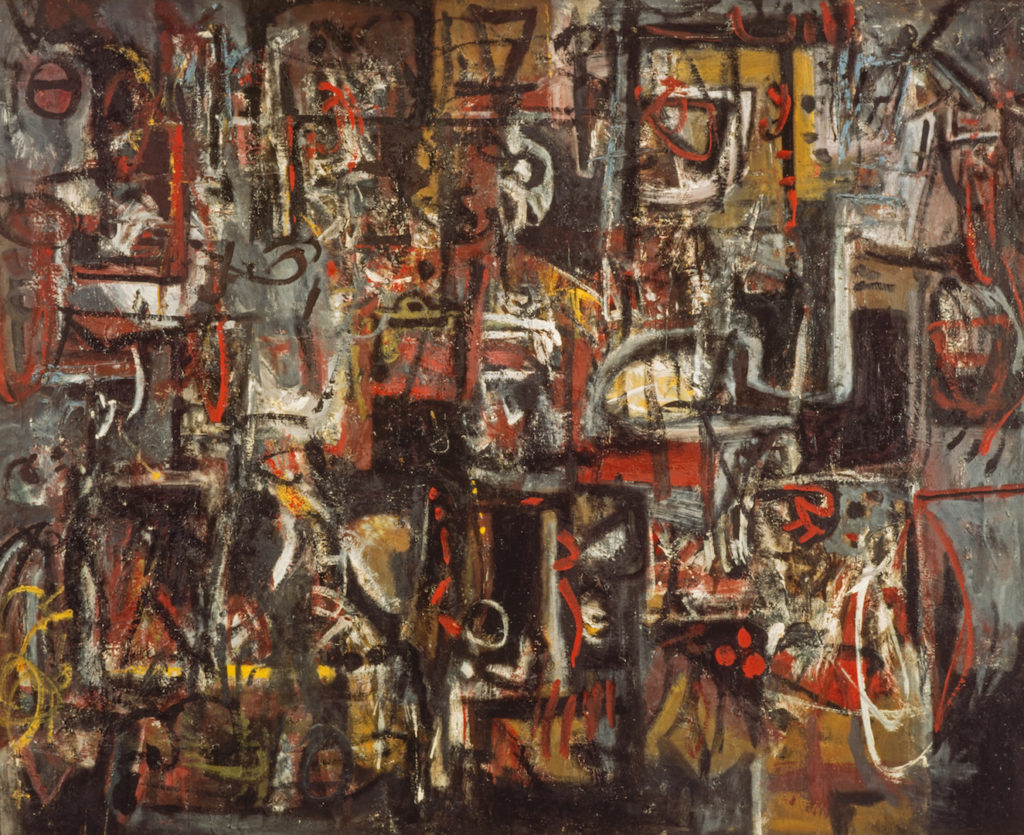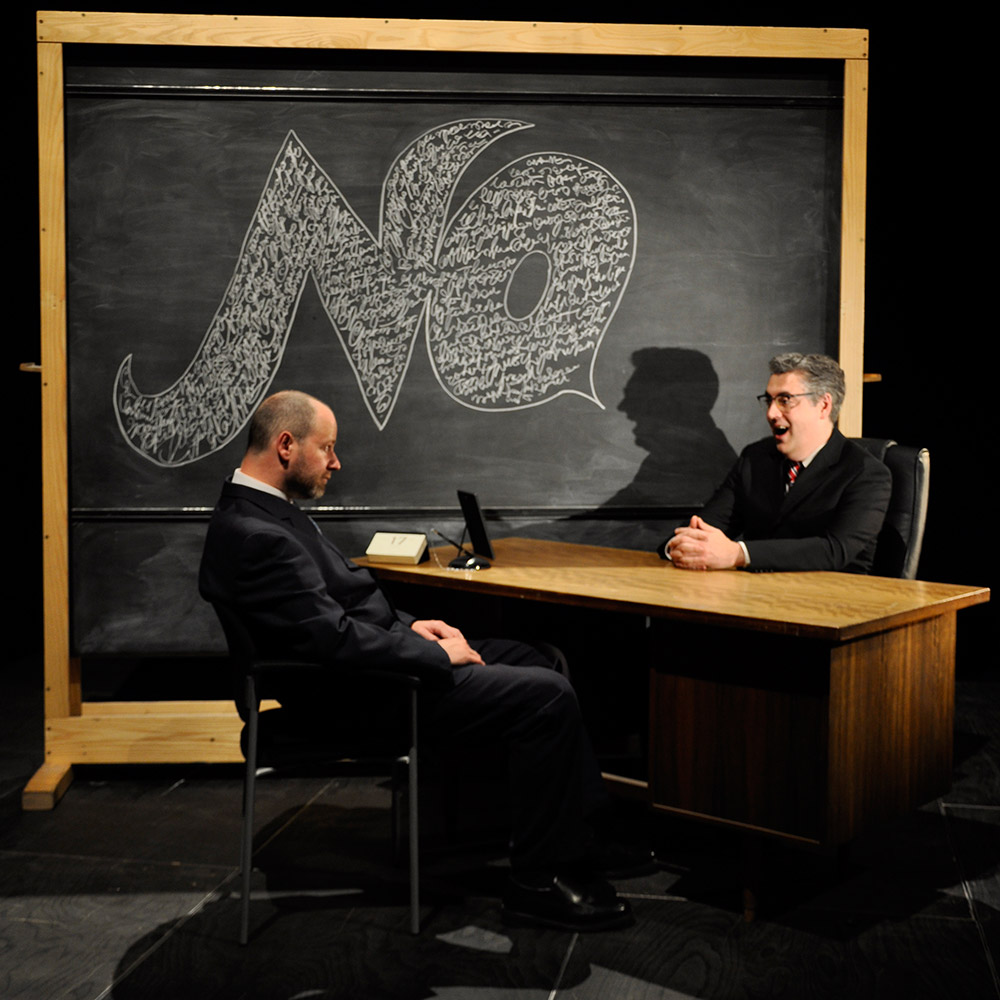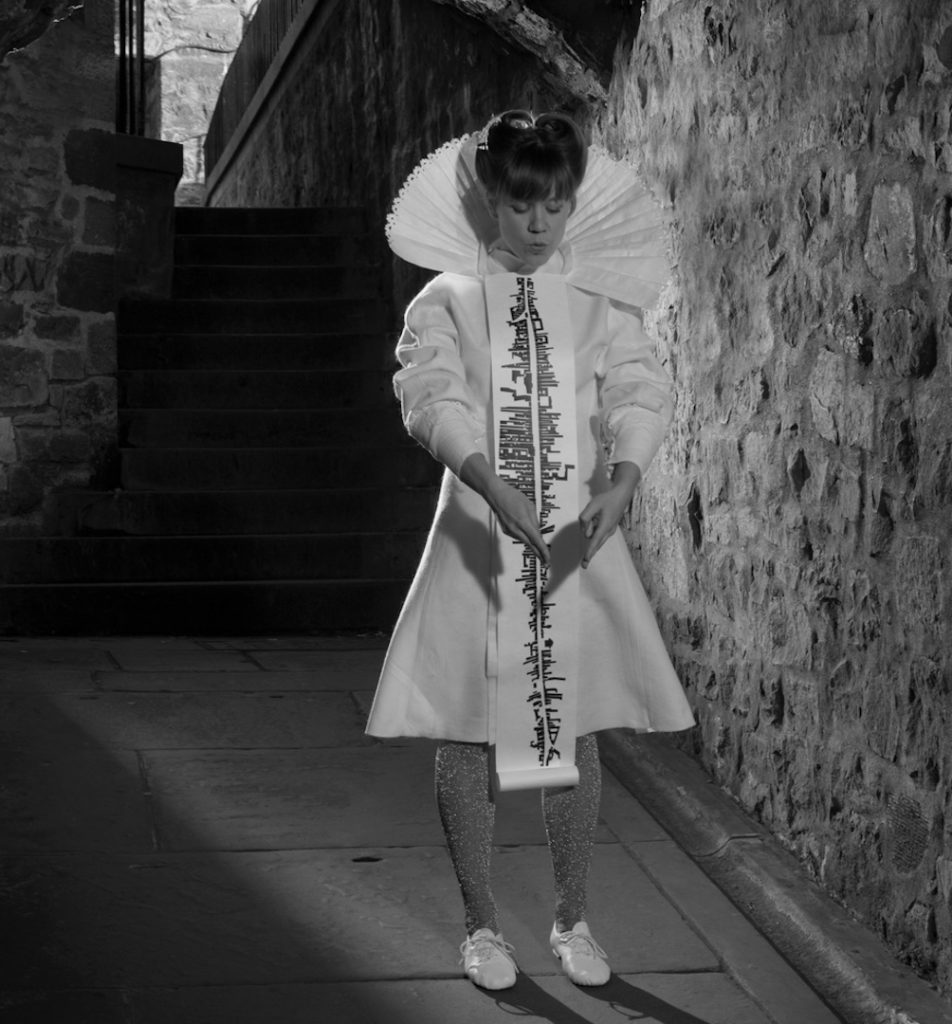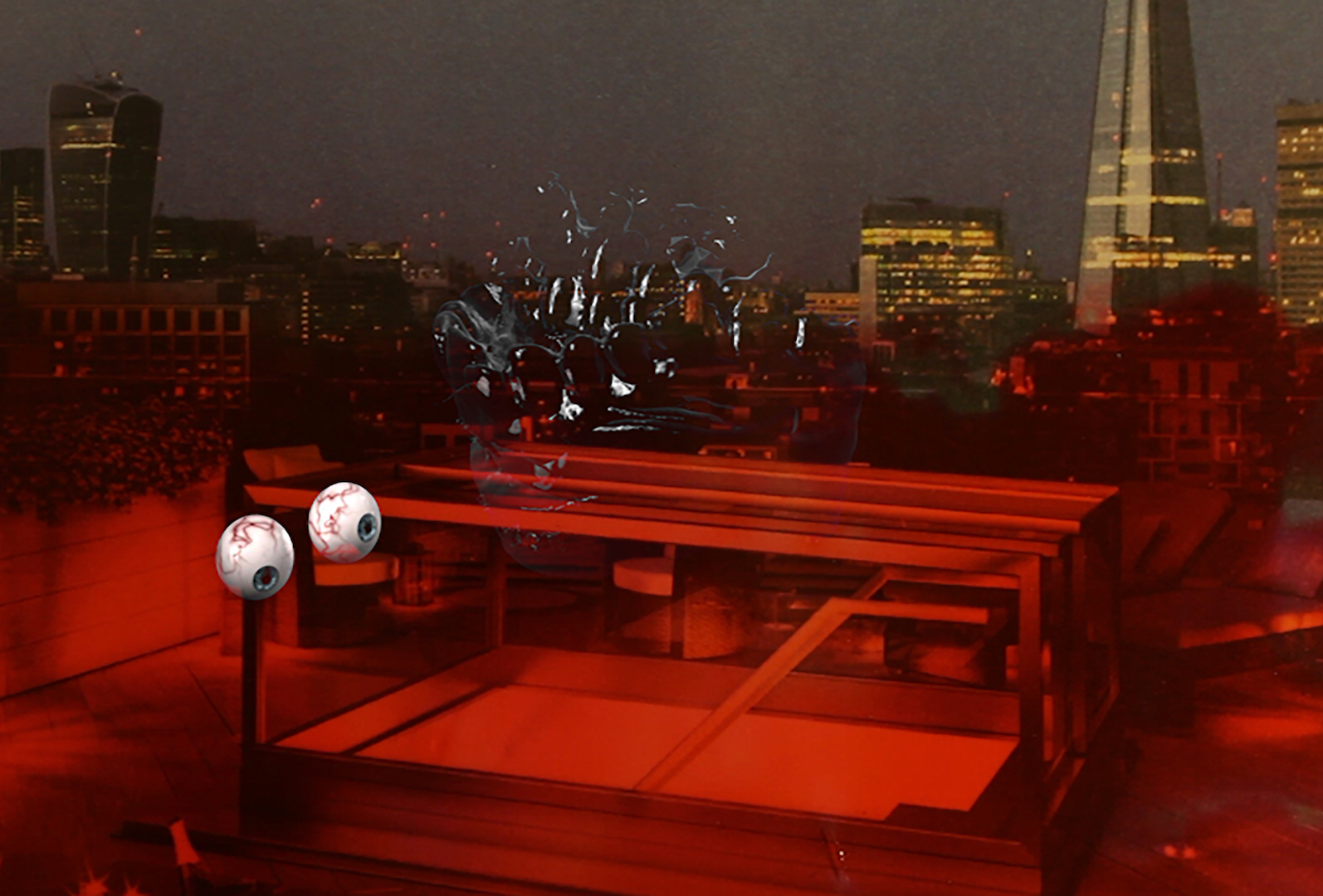The Highland Reels
by Susannah Thompson
Fueled by a top school and offshore oil, Glasgow rocketed to the front of the European art scene. But after two unlucky referenda, Scotland’s cultural standing suddenly looks shaky

William Crozier. Edinburgh (from Salisbury Crags). c. 1927. Oil on canvas. 28 × 36 in. National Galleries of Scotland, Edinburgh.
On the morning of the Brexit result, I woke in a golf-themed guesthouse in Ayrshire, Scotland. At breakfast, met by the embarrassed, sympathetic smiles of an exclusively European group of holidaymakers, I was wryly offered a choice of “continental” or “full Scottish” breakfast. I ate my croissants in grim silence, sipped the bitter coffee. Membership of the EU may have been lost that morning, but the irony was not.
Over the last three years, Scotland has voted in two UK general elections (for members of the parliament in London), a national election (for the parliament in Edinburgh), and two referenda. Scotland voted overwhelmingly to remain in the EU in 2016, but in the referendum on Scottish independence two years earlier — known as the “IndyRef”: every epochal referendum seems to get a twee nickname — the country decided to remain part of the UK, on a vote of 55.3% to 44.7%. And so, in forsaking the chance for greater political autonomy, Scotland will leave the EU alongside England, Wales, and Northern Ireland sometime soon. Historic losses of staunch Labour seats in Scotland, the meteoric rise of the pro-independence Scottish National Party, and the triumph of the Conservatives in Westminster have destabilized many Scottish voters and given artists here pause for reflection. The city of Glasgow, where I live and teach, emerged in the last two decades or so as one of the most dynamic art scenes in Europe, and a hefty percentage of artists here voted for an independent Scotland and for continued EU membership. Amidst such political upheaval and uncertainty, Scotland is in an anticlimactic, contemplative mood, and so is its art.

What, or who, is Scotland, and how do we define ourselves? That is the question rippling through “A New Era: Scottish Modern Art 1900–1950,” on view now at the Scottish National Gallery of Modern Art in Edinburgh. The exhibition purports to reveal the “remarkable yet relatively unknown response of Scottish artists to the development of modern art” in Europe, while at the same time claiming that some later Scottish artists (among them William Gear, Stephen Gilbert, and Eduardo Paolozzi) were at “the forefront of European contemporary art.” Can artists be both “relatively unknown” and “at the forefront”?
In relation to questions around national or dual identity, “A New Era” seems apologetic and compensatory: Look at us! We’re European too! We’re significant! But the fact is that nothing here compares with the best of European modernism — there simply aren’t Scottish (or English, Welsh, or Irish) equivalents to the French, German, or Spanish modern masters. The curatorial framework bears comparison with early approaches to feminist art history in which a trawl through the canon to find “great mistresses” served only to unearth scant examples, adding little to the cause. In “A New Era,” too, truly exemplary works stand as the exception rather than the rule. Perhaps an assessment of the reasons for difference, variation, or exclusion, rather than the insistence on competitive comparison, would be more compelling and ultimately more valuable. After all, it is the very parochialism and failure of some of these works as avant-garde modernism — Stanley Cursiter’s Scottish takes on futurism, for example, depicting Edinburgh street scenes as jumbles of interlocking planes — that is most intriguing.

Many of the better-known works in the first two rooms support art historian Bill Hare’s observation that “throughout 20th-century Scottish art there has been a tint of French Fauvism, a stroke of German Expressionism, and a later dash of Abstract Expressionism.” Hare claimed that such copyist tendencies created a stranglehold on the development of art in Scotland, and indeed modern art in Scotland was always more pastiche than pioneering. As if to embody this, a fellow gallery visitor standing in front of a painting by (Sir) William Gillies raised his eyes heavenward. After a performative sigh, the words “pound shop Matisse” were just audible.
Not all my fellow visitors were so disparaging. A bald, bespectacled man in head-to-toe black — head tilted, arms folded, legs astride — appeared transfixed before Alan Davie’s spontaneously scribbled abstraction Jingling Space (1950), gazing on the ugly impasto with something like lust, fingers pulling at his lower lip. Two steps forward, two back, and repeat. Incidentally, while Thom Yorke of Radiohead is a fan of Davie’s work, I’ve never met a woman who likes it. I’m not sure why this should be the case, though I suspect the scale and spatter are just too “painting boys club” and smugly in-the-know. Davie aside, some of the most compelling works here were produced by immigrants to or émigrés from Scotland in the years before 1950, and the exhibition’s expansive definition of “Scottish art” is apposite. Artists born in Scotland share space with non-Scots who lived or were educated here, however temporarily, and the interconnectedness of the artists (revealed in the catalogue essay, exhibition labels, and panels) testifies to the crucial role of social capital — friendship, love, sex — in the development of art.
This is nowhere more evident than in the work of “the Two Roberts,” Robert Colquhoun and Robert MacBryde: gay, working-class men from Ayrshire who met and studied at Glasgow School of Art in the 1930s. After graduation, the couple traveled to Italy on a scholarship (won by Colquhoun but shared with MacBryde), and spent the majority of their working lives in London, sharing a studio two floors below Jankel Adler, a Jewish refugee who had worked in Glasgow and whose haunted figurative paintings, labeled degenerate by the Nazis, influenced a generation of young Scottish artists.
The Roberts came to prominence in the late 1940s, exhibiting internationally and to critical acclaim before a steep decline. By the mid1940s both had a tendency to halve or quarter the backgrounds to their figurative paintings and still lives. They worked on a remarkably similar scale, using the same range of muted, earthy colors, and their subject matter was often so closely related as to be indistinguishable (here, for example, Colquhoun’s The Card Player of 1944 is joined by MacBryde’s The Chess Player of the same year). Their intertwined biographies often make their work visually inseparable, but it’s almost impossible to consider these paintings in purely formal terms; the Roberts’ lives, after all, were as much an artwork as their paintings. Like the playwright Joe Orton and actor Kenneth Halliwell, they lived lives of both abjection and glamour in the London scene, recounted in John Byrne’s 1992 play Colquhoun and MacBryde. They worked both collaboratively and individually, yet Colquhoun was always considered the greater talent. Hugely charismatic, rivalrous, hedonistic, and utterly bohemian, both died young, and suddenly.
After years out of the spotlight, Colquhoun and MacBryde were finally reconsidered in a two-person retrospective at the National Galleries of Scotland in 2014, and it is worthwhile to see their work exhibited in a broader contextual survey like “A New Era.” A similar opportunity was not, alas, afforded to the artists in the 2015–16 show “Modern Scottish Women,” few of whom were shown again here. Joan Eardley, the subject of a major retrospective at NGS in 2016, is also absent. Presumably, having ticked the Equalities Assessment form, the curators thought women artists had had enough representation for one year. Whatever the case, it wasn’t my pen that pressed down too hard in the visitor’s book, but with a 44:7 ratio of male to female artists I had to agree: “Not enough women!”
Scottish artists of the postwar generation followed Colquhoun and MacBryde to London, and until the 1980s, almost without exception, artists had to leave this country in order to achieve any kind of international recognition. Steven Campbell, a leading proponent of New Image Painting (the Scottish manifestation of Neo-Expressionism), achieved critical acclaim in New York as a Fulbright scholar, though his career had begun as a student at Glasgow School of Art. Peter Doig went to London, and eventually to Trinidad. But by the 1990s, a more media savvy and critically engaged group of Scottish artists were creating opportunities for themselves within Scotland. Artists began working as curators and critics themselves, rather than passively waiting to be discovered. Many were involved with artist-run organizations such as Transmission and Collective, which had been established in the 1980s; others began to show at the Modern Institute, which became an influential commercial gallery. These artists, among them Christine Borland, Douglas Gordon, Martin Boyce, Jim Lambie, Cathy Wilkes, and Ross Sinclair, were identifiable as a group, and defined themselves accordingly (many had studied in the newly formed Environmental Art department at Glasgow School of Art, and many after that in the school’s MFA program).

Yet contemporary art in Scotland has always been more diverse and complex than allowed in the media-confected narrative of a “Glasgow miracle.” Consider Stephen Sutcliffe, a Glasgow-based Yorkshireman who has spent two decades focusing on homosocial and homosexual relationships in art, film, and literature of the mid- to late 20th century (Fassbinder, Visconti, Pasolini, Bogarde, Anderson, and Isherwood, among others, have been subjects of Sutcliffe’s films). Though closely associated with the Glasgow art scene in terms of friends and associates, Sutcliffe was never part of the “Scotia Nostra,” the self-appointed gang of Scottish art stars, and is distinct from artists represented by The Modern Institute, Glasgow’s most influential and internationally visible gallery. And while committed to his adopted city, Sutcliffe’s work often focuses on English culture — Anthony Burgess, Christopher Logue, Cyril Connolly, and Kenneth Williams feature in recent projects.
Five of Sutcliffe’s works were recently acquired by Glasgow Museums and went on view this past fall, alongside two further works loaned by the artist, at the Gallery of Modern Art, a neoclassical building once the home of 18th-century “tobacco lord” William Cunninghame. Video formed the core of the GoMA show, though Sutcliffe’s wall drawings and photographs attested to his wit in examining awkwardness and self-doubt in a distilled, succinct visual form. Many reworked cartoons by the legendary New Yorker artist Saul Steinberg, and the comedic elements of the work met their mark: in the photograph No (After Steinberg) we see the artist John Beagles, his mouth open, his hands folded, sitting across a school desk from an apparently chastened Sutcliffe, who slumps in his chair. A large speech bubble, chalked upon a blackboard behind the two, issues a huge “No” to whatever has been asked.
Around me in the gallery, a range of visitors giggled, pointed, and clearly enjoyed these works. Indeed, visual pleasure cuts across every Sutcliffe exhibition I’ve seen. Even when the subject matter becomes dark or disturbing, the effect is immersive and deeply engaging: Sutcliffe knows how to hold an audience. I first saw his short film Come to the Edge (2003) more than a decade ago, and the images and implied narrative stayed with me, as unsettling now as then. The footage, apparently amateur, shows the ritualistic “playful” violence of schoolboys hazing one of their own, overlaid with a reading of Christopher Logue’s 1968 poem. It’s chilling, blood-quickening stuff, though looking away was easier than it seemed. Now, both at GoMA and in films like Plum (2012) and Despair (2009), viewers experience that rarest of things: video art you want to keep watching. Sutcliffe’s collages of avant-garde film, popular radio, and television programs form ambiguous, intriguing narratives that never become obscurantist. Entertaining and erudite, his work keeps getting better.

At the Centre for Contemporary Arts, just down the hill from Glasgow School of Art, the exhibition “Lilt, Twang, Tremor” took its title from a quote in Anne Karpf’s book The Human Voice, which states that “our lilt, twang or tremor are eloquent beyond words.” Here three young Scottish-based artists — Sarah Rose, Susannah Stark, and Hanna Tuulikki — considered aspects of how voice takes shape in different contexts, how it is performed and consumed, and how the politics of who speaks and who listens are often gendered. The work was timely, representing a broader preoccupation with women’s voice in the writings of Mary Beard, Rebecca Solnit, and Nina Power, and in art by Susan Philipsz, Katrina Palmer, and Laura Oldfield Ford. Hanna Tuulikki’s work is less overtly politicized than that of Stark and Rose, focusing on imitation, vocalization and gesture as much as words. Tuulikki’s performance in the work cloud-cuckoo-island (2016), retells the folk story of Mad Sweeney, an Irish king who wanders the wilderness deranged, mimicking the cuckoo’s insistent call. Both this and SING SIGN: a close duet (2015) are utterly assured, foregrounding the artist’s interest in folk histories, landscape, and ritual. In both of these works, Tuulikki’s vocal compositions are based on birdsong, which occurs again in the background of a third: Away With The Birds (2013– 15), a densely layered installation that explores Gaelic songs that imitate birdsong and bird calls, performed by a female ensemble on the Hebridean island of Canna.
Birds and bird sounds appear again in Sarah Rose’s work, which centers on rumor, translation, and inflection in the transmission of information. A highlight of the exhibition was the artist’s reminder of the historical links between animal conservation and feminism in her Rumour series. For this, works are created by friends and associates of the artist based on her verbal description of an existing image, including a reproduced 1892 cartoon, Birds of Prey, made in response to the impending “Plumage Bill.” The Plumage Bill was designed to prevent the slaughter of birds for millinery feathers, and formed the basis of Virginia Woolf’s essay of the same name, in which she called out the sexism and hypocrisy surrounding the debate. The artist Scott Rogers responded to Rose’s description of the cartoon with three new works, into which he incorporated John James Audubon prints, a hunting cap and an egret feather. Not least, these works remind us of the potential and limits of visual and verbal description.
In Susannah Stark’s installation, the voice in urban space and the translation of voice into cultural experience is key. With reggae musician Donald Hayden, Stark has produced Searchlights (2017), a surround-sound work that feels half protest, half public service announcement. Gallery visitors, standing within an approximation of a Greek agora, are surrounded by dissonant rhythms and lyrics which clash and jar in the gallery. The sculptural objects — soft classical columns adorned with exaggerated facial expressions — refer to the ancient Greek Cynics who rejected standard codes around etiquette and decorum in public space. Again, who gets to speak, who can hold public space, what is deemed acceptable, and on what basis are core questions underpinning Stark’s urgent yet playful practice.

In spite of their eclecticism, historical span, and formal differences, all three exhibitions either explicitly or implicitly consider questions of identity, belonging, agency, and voice. Scottish art is in a period of flux and transition. A number of key artists who were at the center of the Glasgow art scene have left the city; galleries have closed; reputations have faded. The unspoken but fierce competition among emerging artists has abated, and there is no one shift, group or style that might herald what comes next. It is this very uncertainty that has stopped lazy self-mythologizing in its tracks, and the whole environment for art in Scotland has become less predictable. Artists in Scotland today seem quietly assured, rather than brashly confident, and there appears to be a reinvestment in the notion of practice over prizes as a way of garnering serious critical attention. From politics to football to art, longheld assumptions about winning and losing, about power and status, are slowly unraveling in Scotland.
Back in my guesthouse in Ayrshire, Trump Turnberry — a neo-Baroque golfing monstrosity — looms large over the landscape in the tiny hamlet of Maidens. But perhaps tides are slowly turning here too? The resort can’t be filled. Even the permanent cut-price voucher deals are not enough to quell the nausea of would-be guests at Goodfellas Versailles. In art as in life, bang, buck, and bling are over.